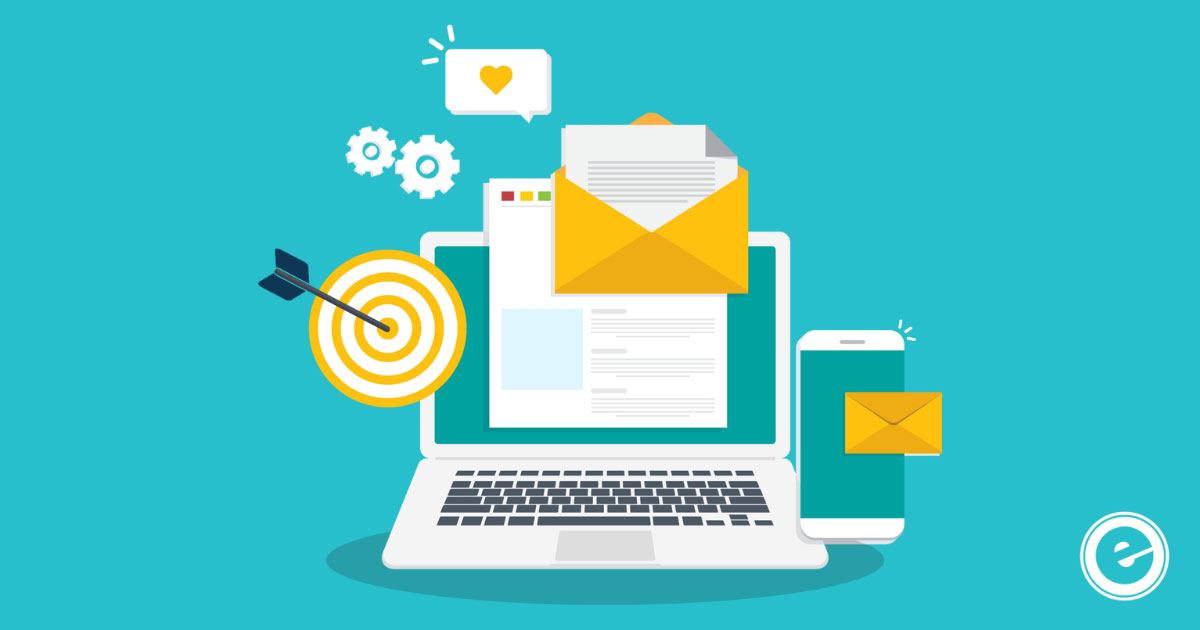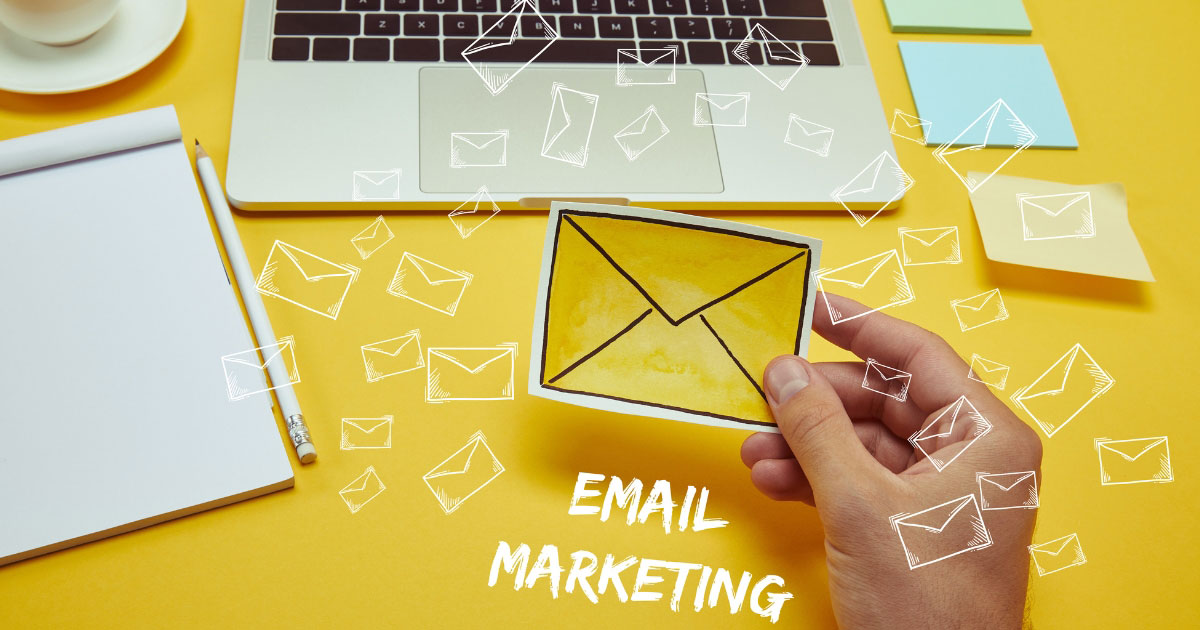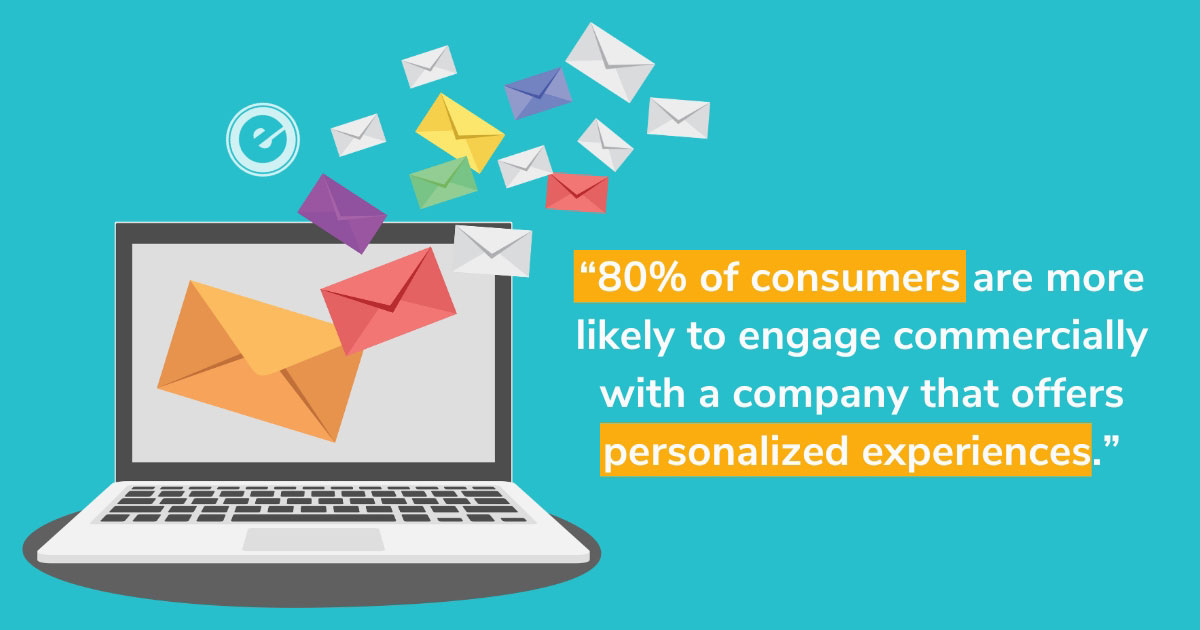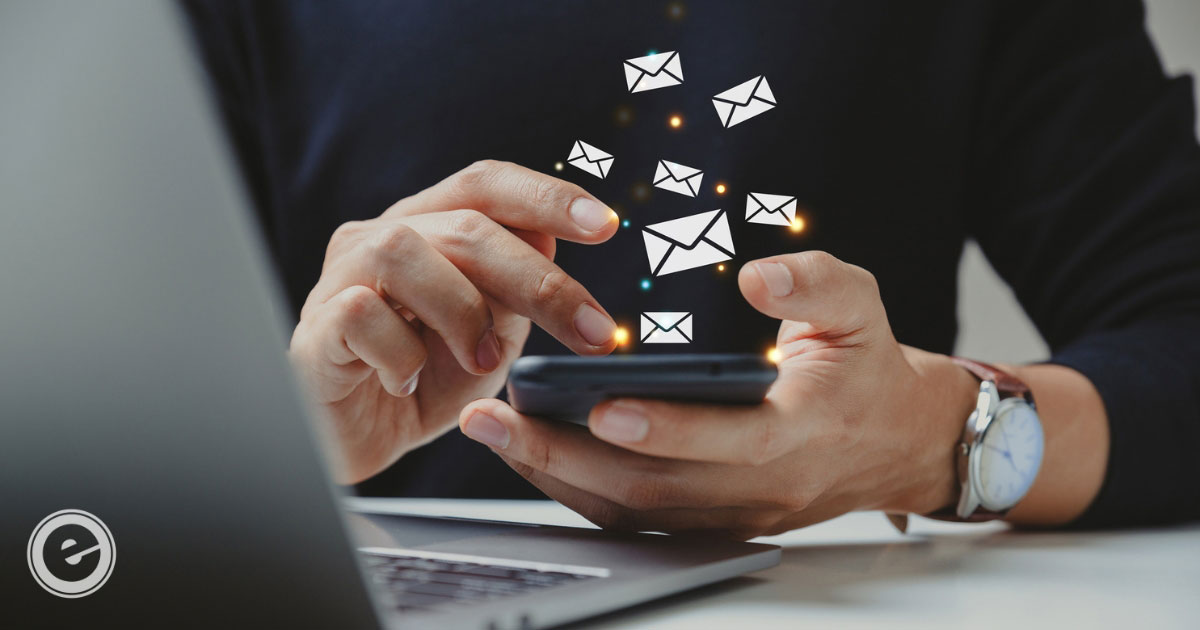
In today’s fast-moving digital marketplaces, consumers are inundated with marketing messages from every possible direction. The prevalence of in-stream, in-feed, dynamic advertising can make the idea of an “old school” e-mail marketing campaign seem almost quaint. The reality is that email marketing is far from obsolete. In fact, those who fail to realize the persistent importance of email (and its subsequent value as a marketing tool) do so at their own risk!
Wait, Isn’t Email Old-School?
Our argument against email’s obsolescence is not some hot take we’re clinging to as online marketing professionals – it’s actually a matter of looking at the numbers. A decentralized global tech institution that sees over 300 billion messages sent every single day cannot, by definition, be obsolete. In fact, total email usage worldwide has increased year over year since the tool’s inception a few decades back.
Important: there are now over 4 billion email users in the world… and many of them want to buy the product or service you’re trying to market.
So, How Do You Capture Their Interest? (Hint: You Have to Know Your Audience)
The fact that email remains perennially relevant doesn’t mean it’s easy to master its use as a marketing tool, however. Quite to the contrary, folks who rely on their email can be exceptionally wary of any incoming messages that come off as “spammy.” When you’re trying to sell something via email, the line between communication and spam can sometimes be a fine one. Finding success with modern email marketing campaigns is all about walking that line artfully.
Even if you’re offering a great deal on an item someone legitimately wants – or even needs – a lot of people reflexively delete every sales pitch that comes to their inbox. Frankly, we think it’s understandable. We all need some method to deal with the sheer volume of unsolicited messages we would otherwise need to spend hours sifting through every time we log on.
That means your sales email’s first – and biggest – obstacle is the fact that it is a sales email at all.
This isn’t hyperbole; email metrics from Litmus Analytics suggest that over half of all marketing emails are deleted within seconds. As such, your email runs a very real risk of being deleted upon receipt or neglected in a junk folder forever… unless, of course, it is able to connect with its recipients in those few moments before that choice to “move selected to trash” is carried out.
Unfortunately, there is no one-size-fits-all answer for just how to make this magic connection. It is, at various times, best achieved through humor, insight, surprise, nostalgia, industry knowledge, or even just the incredible, once-in-a-generation value you’re offering. Understanding which approach to take is a matter of knowing your audience and their values, as well as your own strengths as a marketer and how to leverage them effectively.
Why You Should Be Building Your Email List Now
Despite the evolving digital landscape, email marketing remains a cornerstone for effective audience engagement. Its independence, enduring value, and appeal across generations, coupled with the strategic benefit of owning your communication channel, underscore why email marketing is not only surviving but thriving in today’s competitive environment.
Here are just a few of the reasons you should be working on building your email list:
Decline of Other Marketing Channels
In recent years, we’ve witnessed a noticeable downturn in the efficacy of various marketing channels. Traditional mediums like television and print, alongside digital platforms such as social media and search engine ads, have all experienced a decline in engagement rates. This trend starkly contrasts with the enduring performance of email marketing, which has proven to be both efficient and reliable over time. ‘
The Independence of Email
One of the most significant advantages of email marketing is its autonomy from the control of large tech entities known for manipulating visibility and engagement to serve their interests. Email stands as a direct conduit between businesses and their audience, untainted by the manipulative practices that often afflict platforms once they achieve monopoly status.
Email’s Enduring Value
The resilience of email marketing is further evidenced by consistent open and click-through rates, underscoring its capacity to deliver ongoing value. This steadfast performance indicates not just the channel’s ability to reach audiences effectively but also its role in providing consumers with pertinent content and offers.
The Misconception About Young People and Email
There’s a prevailing belief that email’s relevance is waning among younger demographics, supposedly signaling its eventual obsolescence. Yet, this notion has been repeatedly disproven. As individuals mature, the utility of email becomes increasingly clear—from receiving crucial notifications to enjoying exclusive promotions—demonstrating its lasting appeal across age groups.
Ownership and Control
A critical aspect of leveraging email marketing is the emphasis on ownership and control of your subscriber list. Unlike third-party platforms where access and engagement can be suddenly restricted or monetized, maintaining your own email list ensures direct and uninterrupted communication with your audience. This strategic asset empowers businesses to cultivate and deepen relationships with their subscribers without external interference.
Personalized Email Marketing: Back to the Basics of Customer Engagement
One of the best ways to give your emails a fighting chance to make that all-important initial connection is through personalized email marketing. According to research firm Epsilon, an incredible 80% of consumers are more likely to engage commercially with a company that offers “personalized experiences.” An even more significant 90% expressed that they find the concept of personalization generally appealing.
There are a variety of ways to create a marketing email that is more personalized. For example, you may be aware of automated systems that can pull your customers’ names, hometowns, or other information from your database to give your marketing emails a glossier and more personalized touch. While this doesn’t require spending working hours to create connections in a meaningful way, reading an email that addresses them by name can have a subtle psychological influence on the customer. This is in hopes that it will make them feel more comfortable with, or connected to, your brand.
Because it’s relatively cheap and easy to implement, this type of dynamic content in email marketing does have the potential to be cost-effective in some applications. However, it’s important to know that you won’t be alone; marketers are employing this strategy every day. That’s why it’s crucial to think of creative and punchy ways to pull your data into your emails instead of just pulling your customer’s name into the top of the message.
For example, consider using a database to grab each customer’s most recent purchase, and then send an email with a subject line promising “EXCLUSIVE Discounts for (insert product name here) Owners Only!” Maybe throw in the dollar sign eyes emoji and you’ve got a winner. It doesn’t have to be quite that vibe, but you get the idea.
At the other end of the spectrum from these superficial, automated touches would be the business owner who follows up personally with each customer and potential customer through individual emails. This is typically only feasible for boutique operations with the most exclusive clientele – which is to say, the fewest customers. For example, a talent agent representing a few people in a niche field might well be able to send personal weekly emails to each of their clients, but even the smallest small-town grocery store that sees 50 customers in a day will struggle to manage it. This is especially true if they understandably don’t have the funds to hire additional full-time staff just to write emails about every shopper in town.
So, What’s The Sweet Spot?
The sweet spot, as you might have guessed, lies somewhere in between total automation and laborious hyper-personalization. Making regular time in your work week for facilitating personal, one-on-one customer interactions through email (or social media) is a great habit to get into. But, you can reserve this time for special cases, keeping tabs on challenging situations, following up on memorable projects, and reaching out to previous customers who may have new needs due to growth or change.
While one-on-one communication with customers should remain what you strive for throughout all phases of your business venture, it’s important to take care not to get consumed by the social aspects of personalized customer engagement. This can become a time and energy sink. For instance, engagement on Instagram is great for building a brand, but if your followers aren’t converting to increased revenue, can you really say that Insta is a key part of your marketing strategy or a cost-effective use of your time?
Sweet Spot #1: Email Segmentation
One great way to find the happy medium needed to effectively personalize an email marketing campaign is by using a process known as email list segmentation. With an email segmentation strategy, you don’t write a single generic email blast to your whole list, but you also don’t write an invasive- feeling, overly-personal email to every individual customer. Instead, you write a few different emails for distribution to different segments of your customer base or email marketing list.
Email segmentation can be an extremely powerful tool for a few reasons:
- You get to define the segments. Write different marketing emails by age group, geographic region, product lines, previous customers vs. potential customers, value shoppers vs. big spenders, and more.
- You can choose how many or how few segments to use, and easily scale your strategy as your capabilities and your business grow.
- Send marketing emails to different segments at different times to better leverage emerging trends, current events, and customer behavior patterns.
- Tailor messages and branding elements to different segments of your audience to better reflect their interests and values.
- Set up special segments for new customers and send emails introducing them to your brand, welcoming them to your customer community, and offering exclusive values that encourage a second purchase (and long-term brand loyalty).
- Send timely and highly targeted emails to niche portions of your customer base, such as a critical update for a specific product that doesn’t impact the rest of your customers.
- Market effectively to customers in different languages.
One thing to keep in mind when setting up an email list segmentation strategy, as well as when implementing dynamic email content, is that your strategy will only be as powerful as your data and how you use it.
Read: Do not rush into a strategy just because you read that you “need to do email segmentation.” To put it more explicitly, if you cannot clearly state why you are creating a certain segment and how you are going to market to that segment, a segmented email is going to be no more valuable than a generic email blast.
(It’s worth noting that while you’re thinking up clever ways to use your data to create better marketing emails, be sure you’re also being respectful of customer privacy. Be sure to follow best practices for storing sensitive data like email lists and customer details.)
Sweet Spot #2: Interactive Email Elements
Another fun way to increase the feeling of personalization without actually personalizing emails is to include interactive elements – or links to them – in your marketing emails. The ubiquitous “spin the wheel to reveal your exclusive discount” game that a lot of online retailers include in their marketing is a prime example. Something more formal-feeling, like a mortgage calculator, is another possibility.
Yet another interactive element involves chatbots. The emergence of natural language AI and algorithmically powered customer service bots is now taking the idea of interactive email to an entirely new level. Your customers can potentially carry on an entire email conversation with a computer program that works on your behalf. While this sort of new technology is exciting and opens up a world of possibilities in marketing and customer service, you should use it sparingly and thoughtfully. You definitely would not want the AIs available today taking the lead on writing all of your marketing emails, for example.
Sweet Spot #3: Email Marketing in Your Pocket and the Importance of Mobile-Friendly Emails
Another crucial consideration for modern email marketing campaigns is the ubiquitous nature of mobile devices. According to email marketing case studies by SuperOffice, more than 80% of all emails that get opened are now accessed on cell phones and tablets.
Here are some of the fundamentals to keep in mind when trying to write marketing emails that pack a punch on mobile devices:
- Clear and Compelling Subject – The subject line is where your marketing email lives or dies, on mobile or otherwise, so make it pop. If you’re too wordy, the best part of your message could get cut off on most customers’ displays, so it’s ideal to compel recipients to open the email in as few words as possible.
- Responsive Formatting – Make sure your email template is responsive and portable, which means it looks good and works well on any device with any screen orientation or resolution. Customers who encounter a less-than-optimal viewing experience are likely to give up on your email before they ever read it.
- Concise, Scannable Content – Keep your copy short, punchy, and easy for recipients to absorb with a quick scan-and-scroll. People on their phones may have limited or divided attention, so get straight to the point with short paragraphs and world-class bulleted lists (like this one!)
- Single Column Layout – Let’s leave the slick multi-column marketing emails on the 1998 floppy disk they came from. If you need a multiple-column layout to effectively present complex information, save it for your website and simply include a link.
- Clickable CTAs – The call to action at the bottom of your email should be prominent and include a link that takes the reader directly to the product in question or the additional information they need. Consider using a larger font or even a graphic button (but keep the design simple for smaller displays).
- Contrasting Colors – Make sure your email’s color palette is easy on the eyes of users who are on the go and in inconsistent lighting. There is often no harm in letting the recipient’s default email view settings take the lead when it comes to what the bulk of your marketing copy will look like.
- Optimized Images – Sometimes, it might even be better to use no images. If you need to include brand graphics or product photos in a marketing email, make sure they’re small enough to load quickly, even for users with sketchy connections. Email can indeed be used as an effective visual format and even a file transfer protocol or meeting scheduler. Just remember that, at its core, email remains a tool for text communication.
(Many people have their email configured not to load images at all for security or data conservation reasons, which turns all your high-resolution photographs into ugly glitches in your email layout anyway.)
Let your words be worth a thousand pictures, and create a compelling narrative that puts the reader in the driver’s seat as they take the next step by clicking your CTA.
Elevate Your Email Marketing with Expert Solutions
In the intricate dance of digital marketing, personalizing and tailoring your email campaigns is crucial, but it's just one piece of the larger puzzle. Navigating the competitive and ever-evolving digital marketing landscape can feel like a daunting, full-time commitment on its own.
This is where our expert services come into play. Our comprehensive digital marketing and SEO offerings include specialized email marketing solutions designed to integrate seamlessly into a broader, multi-channel marketing strategy. We're committed to demonstrating how businesses of all sizes, even those just starting, can harness the power of email marketing to their advantage.
Should you seek assistance in refining your email list segmentation, crafting dynamic and engaging email content, or incorporating interactive elements that drive immediate results and steady revenue growth—or if crafting compelling marketing emails seems overwhelming—reach out to us.
By connecting with our team of experienced online marketing experts, you'll have the opportunity to discuss your project goals and strategize your digital marketing efforts effectively. Remember, successful marketing transcends mere sales targets; it's about fostering enduring customer relationships that cultivate brand loyalty and encourage repeat business, ultimately transforming your venture into a thriving, long-term success.
Book a Free Consultation today!
Resources:
- Statista. (n.d.). Number of email users worldwide from 2017 to 2025. Statista. Retrieved from https://www.statista.com/statistics/255080/number-of-e-mail-users-worldwide/
- PR Newswire. (2010, June 23). Email metrics reveal 50% of marketing emails are deleted within two seconds. PR Newswire. Retrieved from https://www.prnewswire.com/news-releases/email-metrics-reveal-50-of-marketing-emails-are-deleted-within-two-seconds-97091869.html
- Epsilon. (n.d.). New Epsilon research indicates 80% of consumers are more likely to make a purchase when brands offer personalized experiences. Epsilon. Retrieved from https://www.epsilon.com/us/about-us/pressroom/new-epsilon-research-indicates-80-of-consumers-are-more-likely-to-make-a-purchase-when-brands-offer-personalized-experiences




